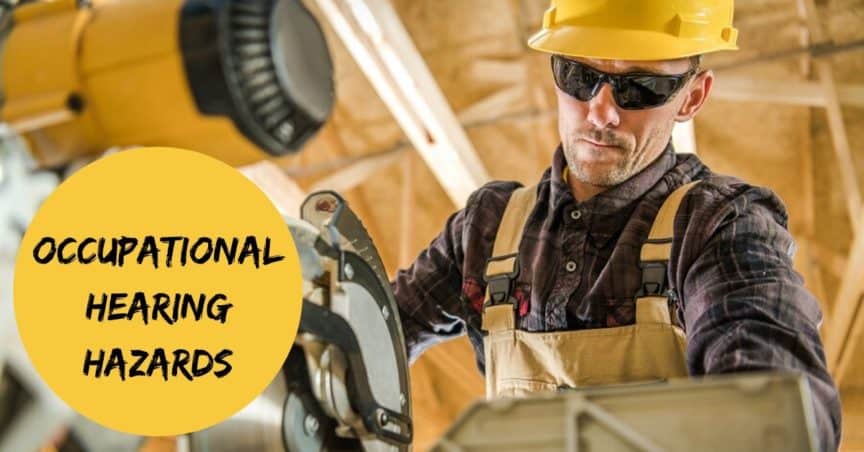- How to Care for Infants With Hearing Loss - April 15, 2024
- Hearing Aid Tips for Runners - April 5, 2024
- Overcoming Misconceptions Around Hearing Aids - March 27, 2024
We are constantly surrounded by noise – alarm clocks, household appliances, music, TV, traffic, conversations etc. We typically absorb normal levels of these sounds but exposure to increased noise can be harmful and severe enough to impair hearing. There are a variety of factors that contribute to hearing loss including existing medical conditions, genetic history, and exposure to loud noise. Exposure to loud noise can happen in numerous settings: attending concerts, sporting activities, gun ranges etc. In addition to these more recreational ways, another major site for loud noise is the workplace. According to the Centers for Disease Control and Prevention (CDC), nearly 22 million people are exposed to workplace noise that can potentially damage their hearing.
If you or someone you know works in a noisy environment, being aware of the impact it can have and how you can mitigate this impact can help prevent noise-induced hearing!
How Hearing Works
To understand how loud noise can cause hearing loss, it is imperative to first understand how we hear. The sense of hearing is complex and requires the auditory system to collect and process information. This happens through the ears which is made up of three main parts:
- Outer Ear: is the most visible part of the ear (the cartilage), ear canal, and ear drum which separates the outer ear from the middle ear.
- Middle Ear: consists of the ossicles – three tiny bones that are connected – and the Eustachian tube which is responsible for equalizing the pressure within the ears.
- Inner Ear: is composed of the cochlea and nerve canals that lead to the brain.
The outer ear absorbs sound from the environment which travels down the ear canal before landing on the eardrum. This creates movement and causes the ossicles to vibrate which amplify the sound waves and push them further into the inner ear. This activates the hair cells and fluid in the cochlea which helps convert the soundwaves into electrical signals that are sent to the brain (through the auditory nerve). The brain is then able to process and make meaning of the sound.
Occupational Hearing Loss
Occupational hearing hazards include exposure to loud noise or ototoxic chemicals.
- Noise: is considered dangerous to hearing if it is 85 decibels or higher
- Ototoxic chemicals: include solvents, metals, carbon monoxide, and specific pharmaceuticals that make the ears vulnerable to the effects of loud noise
According to the CDC:
-
- 12% of the workforce in the U.S. has hearing difficulty
- 24% of this is caused by occupational exposure to loud noise
- About 10 million people are exposed to solvents in the workplace
The absorption of loud noise and ototoxic chemicals can disrupt the auditory process, specifically damaging the inner ear and result in hearing loss. How does this happen? Well, the louder the noise, the stronger the sound waves and vibration of the hair cells in the cochlea. If regularly exposed to loud noise, the hair cells are constantly vibrating and moving. Hair cells need time to rest and recover from listening activity. So being overworked can cause them to lose sensitivity and become ineffective. These hair cells, unlike other types of cells, do not regenerate. Humans are born with all of the hair cells we will ever have which amounts to thousands in each ear. This means that any damage is permanent.
Preventative Tips
There are measures that you can take to prevent noise-induced hearing loss and protect your hearing health:
- Assess noise level: you can use an app that measures sound levels to determine if the noise in your workplace environment is 85 decibels or higher and is hazardous. You can also ask your supervisor or check in with human resources.
- Wear protective gear: there are various ways you can protect your ears from harmful noise. This includes earmuffs, headphones, and ear plugs which reduce the amount of noise your ears absorb.
- Create a physical barrier: this isn’t the easiest or most available option but if you can, place a physical barrier between you and the source of the noise or move areas to create more distance.
- Take listening breaks: when you can, take breaks so that your ears have time to rest and recover from taking in so much sound.

